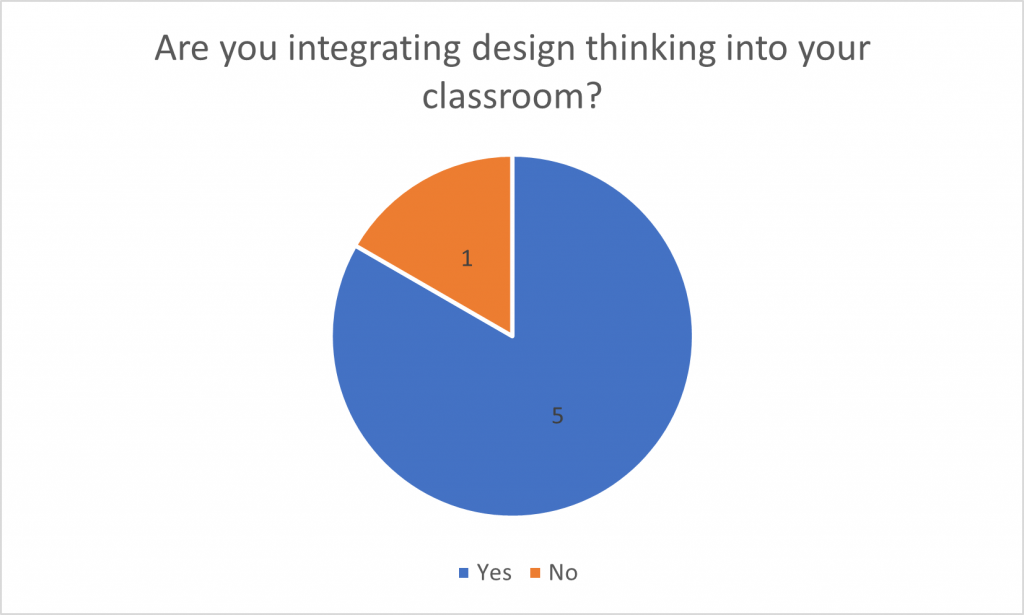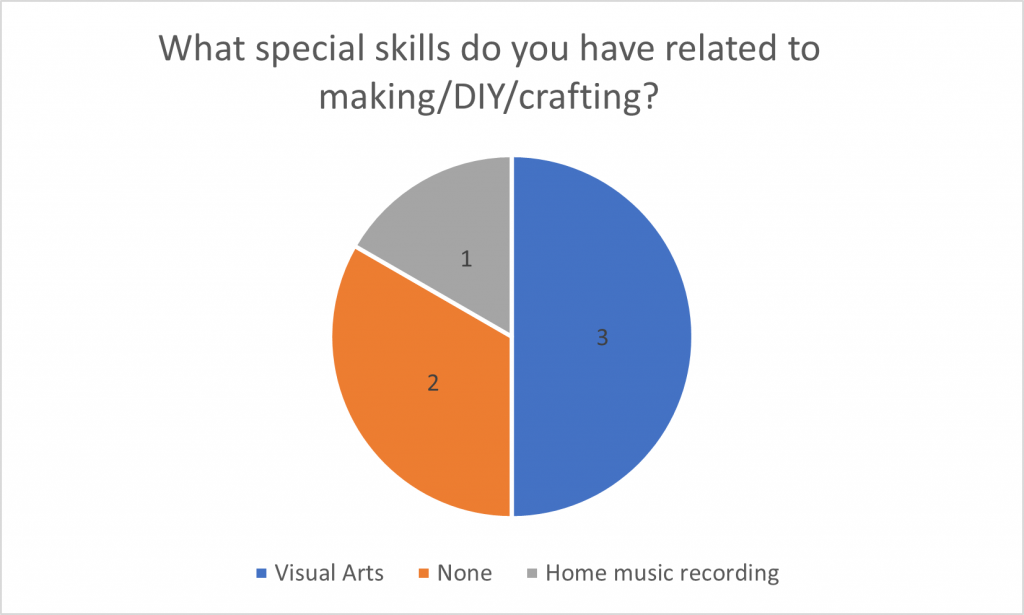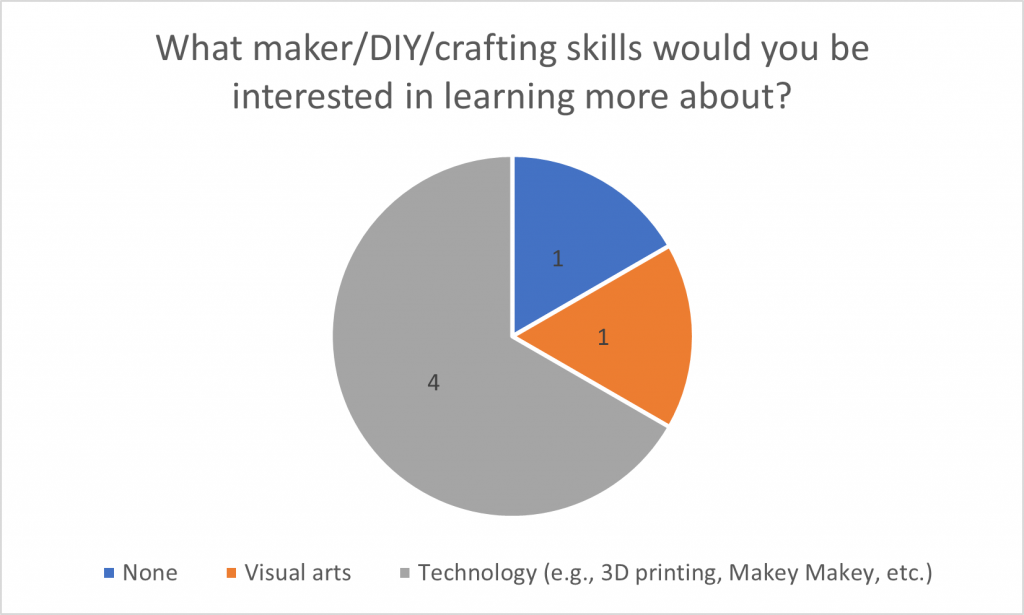For this assignment, I surveyed staff on their current views of our school’s LLC, as well as their design thinking and maker-related practices. I did not get permission to survey students for this. The goal was to see where the library could be improved, and where a makerspace could fit into that vision. I only received 6 responses, making it challenging to identify trends, but I worked with what I had and assumed that the sample was representative of the population. In this post, I will identify some trends in the data and reframe problems to centre student learning. I will then share a design challenge statement for the first problem.
Problem: Everyone’s already doing design thinking. What do they need the LLC for?

When asked if they were already doing design thinking in their classroom, all but one teacher said “yes”, and the remaining teacher said “no, but I’m open to trying”. Clearly, design thinking is something that our teachers are already familiar with and experimenting with.
Reframe: Centralizing tools and materials eases the burden on individual teaching teams with preparation and cost, making design thinking more accessible to students
One of the comments had a very telling perspective on this: “[I]t is a lot to set up, and unfortunately we don’t have a huge budget for that, so I feel it limits what we are capable of doing in our place”. This is not a library-space problem per se, but if we are looking at it through a Learning Commons perspective, it is a problem that can be effectively addressed through the LLC as a centralized hub of collaboration and learning.
As a bonus, folks might shift their perspective on what the LLC can be used for. One comment said: “What do these questions have to do with the initial thesis [improving the library]? DIY info should be a different questionnaire.” This, along with other responses around negative experiences in the library, indicated that the respondent 1) had a very rigid idea of what libraries should and could look like, and 2) didn’t have very positive experiences with libraries. From this, we can infer that messaging about how the LLC model can strengthen student learning is not reaching all of our staff. Initiatives around design thinking and makerspaces may help to bring resistant staff around to newer LLC ideas.
Problem: Respondents don’t have many skills in making/DIY/crafting

Through this question, I had hoped to identify avenues for collaboration in the makerspace, and I got a lot of painters and potters (which is still a valuable avenue for collaboration!). Based on our small sample size, the skills aren’t out there in the school community. However, demand for maker-related skills, tech skills specifically, sure is.

Reframe: Teachers want to bring more technology and maker skills into their classrooms
Again, maker-related technology is something that a lot of folks are interested in and something that could have value to our students through computational thinking, rapid prototyping capacity, and generally “hooking” kids into other subject areas through meaningful integration. We have identified a need in our community and can use the LLC as an avenue to address it.
Design challenge statement
For this design challenge, I will be looking at the first problem around centralizing materials for design thinking. I believe that these two problems are very tightly connected, but the first is broader and more likely to encompass the second as an outcome.
Statement: Conceptualize a library space for design thinking that:
- Supports hand prototyping/roleplay
- Supports collaboration between staff, between students, and between staff and students
- Supports student autonomy and play
- Is welcoming, accessible, and safe for all participants
for all staff, students, and guests in our school.
Materials: cheap prototyping supplies, like cardboard, paper, tape, etc. White boards on walls for stand-up thinking.
Teams: Groups of 2-3 students, classroom teachers, support teachers, and support staff (e.g., EAs, office staff). Perhaps it would be worthwhile to have a mix of homogeneous and heterogeneous groups (e.g., a teacher, an EA, and a student).
Process: Stanford design cycle.
Source
Rendina, D. (2016, April 27). How to identify and reframe design problems in your library space? Knowledge Quest. https://knowledgequest.aasl.org/identify-reframe-design-problems-library-space/